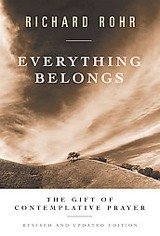Slow, Repetitive Lectio Reveals
What a Text has to Offer
With each repetition of Lectio, or reading, we receive more of the true meaning of a text. Reading is the first step of Lectio Divina.
The 11th century Carthusian monk, Guigo de Castro, used eating as a metaphor for spiritual reading. Listen to his words:
"Reading, as it were, puts the food into the mouth; meditation chews it and breaks it up; prayer extracts its flavor; contemplation is the sweetness itself which gladdens and refreshes."
As we'll see, the first step of slow and attentive reading prepares us for the riches of the other three steps of this ancient art. In eating, putting the food into your mouth is the crucial first step. It's very necessary for the chewing and swallowing that follows. Similarly, Lectio, when performed properly and with patience, opens your spirit or true self to receive the rich nutrition that's coming.
A practical example
I'm a practical person, and to get very practical in our discussion of Lectio, let's consider a sample text and slowly work through the process. I'll summarize the most important points in the conclusion at the end of this section.
 Lectio... reading of the bible
Lectio... reading of the bible
or other sacred text
To gain the most benefit from our discussion of the four steps: Lectio, Meditatio, Oratio, and Contemplatio, I suggest you follow along with the exercise, doing the things discussed and suggested here as you read. This will expose you to the practice and not just the theory of spirtual reading. It will be a solid move toward the application of this ancient art in your life.
As a follower of Jesus, I try to spend time in the gospels on a regular basis. Not that the rest of the bible is unimportant or less applicable, but I've found that the gospels, containing the words, instructions and stories of Jesus, have riches that I'm yet to fully discover, comprehend and apply. And most of it is not very easy to internalize just by thinking, so it's lends itself very well to the deeper practice of spiritual reading.
I always attempt to make my individual reading sessions part of an ongoing progression through a specific book, instead of just randomly choosing a text each day. This helps me remember the bigger picture of the bible's grand story.
So, let's say that we're about halfway through the book of John, and on a particular morning we open our bible at John 12. Before you read anything from this chapter, you should stop and pray. Briefly ask God to open both your mind and heart for what is to follow and to use the time to be with you and form you. Then be quiet for a short period just to bring about a sense of peace.
As you start, remember that this first step is all about slow, repetitive reading. Start by reading the whole of John 12 to get the context in the bigger picture of the whole book.
As you read, be sensitive to what portion of John 12 you might want to spend more time on. In your choice, don't go for something you like, or something that sits well with you, or your tradition. Try to select a portion of the chapter that you sense contains a lesson for you, especially if you're not sure of its meaning.
For illustration purposes I've chosen John 12:20-36. Let's call this our focus passage. Now, read the focus passage again, very slowly. Read it a second time out loud — truly listening to the words, receiving them fully.
If you feel you've had enough repetition, move on. If not, you might choose to read the focus passage again, and again. You'll find that you 'take in' more of it with every repetition.
Finally, select what we'll call a focus verse or verses for the rest of the Lectio Divina exercise. Something you want to seriously wrestle with. Feel free to choose anything, but choose wisely. This short passage will be the main focus of the next three steps. For our purposes here, I have selected the following verses:
"Listen carefully: Unless a grain of wheat is buried in the ground, dead to the world, it is never any more than a grain of wheat. But if it is buried, it sprouts and reproduces itself many times over. In the same way, anyone who holds on to life just as it is destroys that life. But if you let it go, reckless in your love, you'll have it forever, real and eternal." — John 12:24-25, The Message
Read the focus verse out loud once or twice to conclude the first step.
Conclusion
Lectio is an important first step of the Lectio Divina process. It's here that you get exposure to the text that you're turning to for new, deeper meaning. The process can be summarized as follows:
- As part of the ongoing progression through a particular book of the bible or other sacred text, turn to the next chapter in line and it read it once, slowly...
- Select a focus passage to spend more time on. Read it once in silence and once out loud. Add further repetitions for deeper understanding if you feel it's necessary.
- Select a focus verse and read it a couple of times.
The practical advice in this section might seem very particular and restrictive. Remember, it is just to get you started. As you practice Lectio Divina and gain confidence, please feel free to apply the core principles in a way that suits you.
Always remember that it's not a strict science, but a gentle art.
Now, let's turn our attention to the second step,
Meditatio.
A Suitable Quote...
"How do you make attractive that which is not?
How do you sell emptiness, vulnerability and nonsuccess?
How do you talk descent when everything is about ascent?
How can you possibly market letting-go in a capitalist culture?
How do you present Jesus to a Promethean mind?
How do you talk about dying to a church trying to appear perfect?
This is not going to work (admitting this might be my first step)"
— Richard Rohr at the beginning of his book Everything Belongs...



